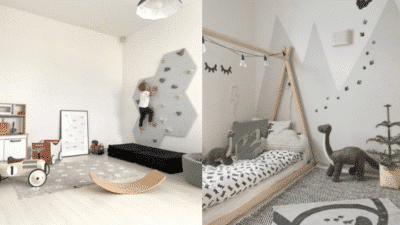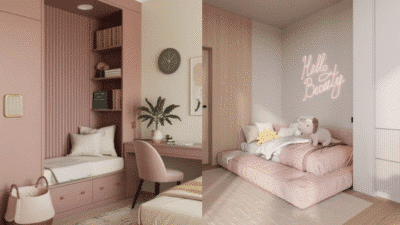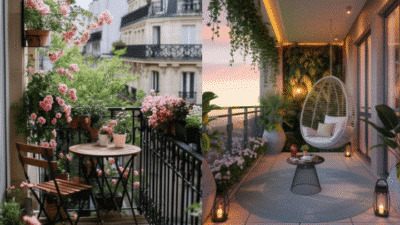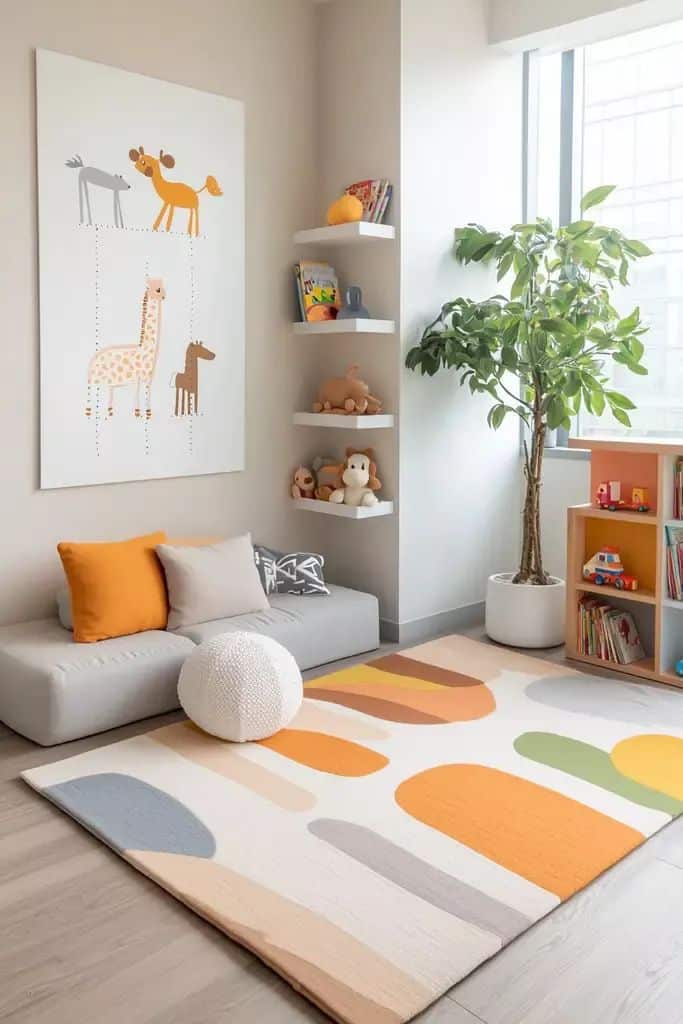
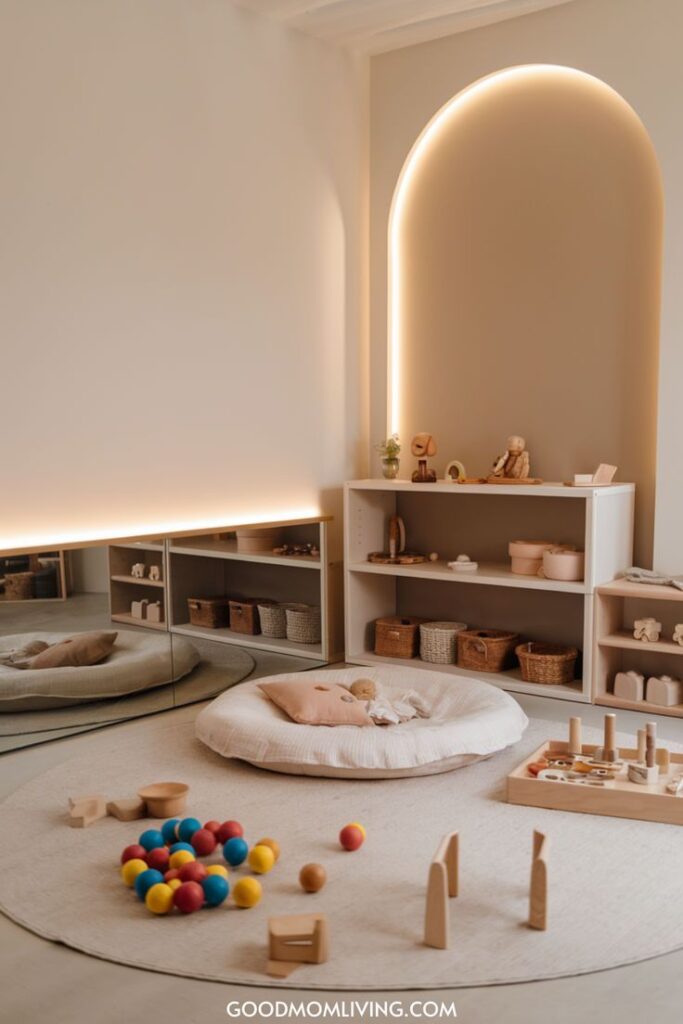
Choosing calm colors for kids’ rooms can help create a peaceful space that supports their growth. Soft shades like light blues, gentle greens, and warm neutrals can reduce stress and improve focus. These colors make the room feel safe, helping children relax and feel comfortable.
A calm room can also encourage better sleep and boost creativity. Parents and caregivers can pick colors that suit the child’s age and personality while keeping the environment soothing. Small changes in color can make a big difference in how children experience their room every day.
Designing a calm space means thinking about balance, lighting, and how colors work together. Mixing calm colors with the right decor strengthens the peaceful feel. Avoiding overly bright or loud colors helps keep the room restful and inviting.
Key Takeaways
- Calm colors help lower stress and improve focus in kids’ rooms.
- Choosing age-appropriate soft tones supports development.
- Balanced color and decor create a soothing environment.
The Science Behind Calm Colors
Certain colors can affect children’s mood, focus, and overall growth. Using these colors in kids’ rooms can help create a better environment for learning and relaxing. The ways children see and react to colors also change as they grow.
How Colors Influence Child Development
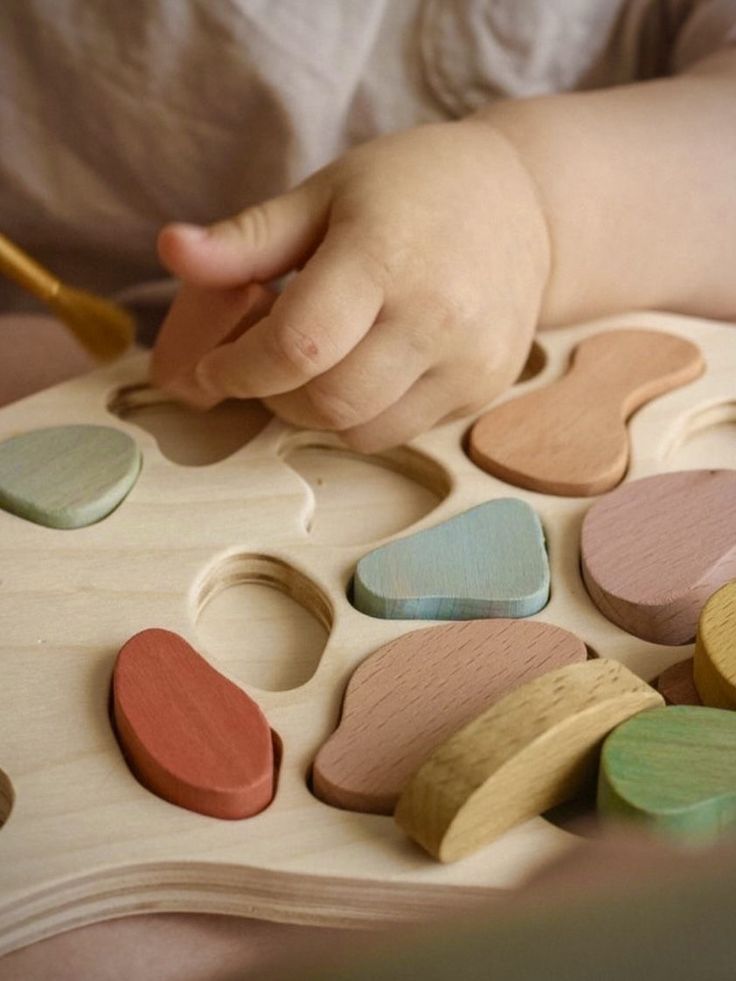
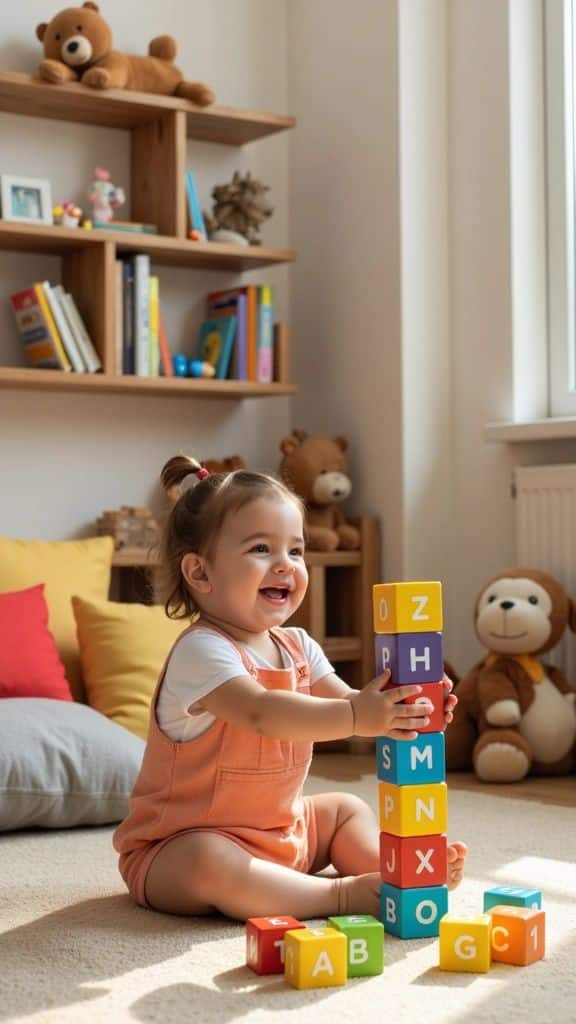
Colors can impact a child’s brain and behavior. Soft colors like light blues and greens tend to lower stress and encourage calmness. This helps kids focus better, which supports learning and problem-solving skills.
Bright and loud colors, like red or orange, can make children feel more excited or restless. These might be better for play areas rather than bedrooms. Introducing calm colors in sleep spaces can improve rest and mood regulation.
Choosing the right colors can support emotional development. It can help children feel safe and secure, which is important for confidence and social skills.
The Psychology of Calm Colors
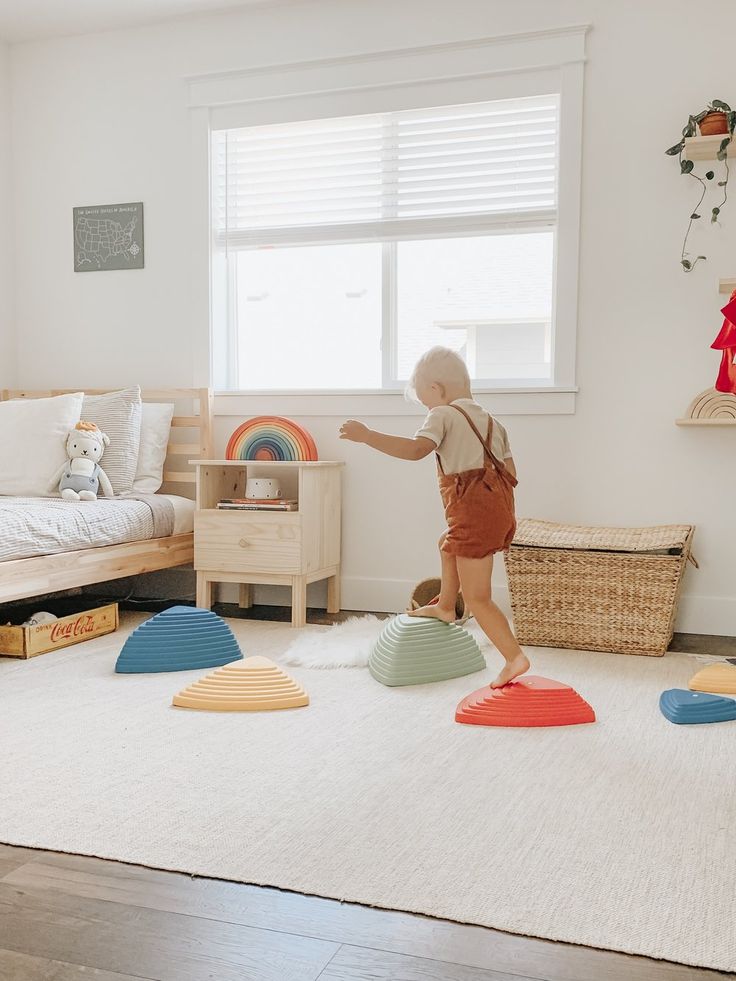
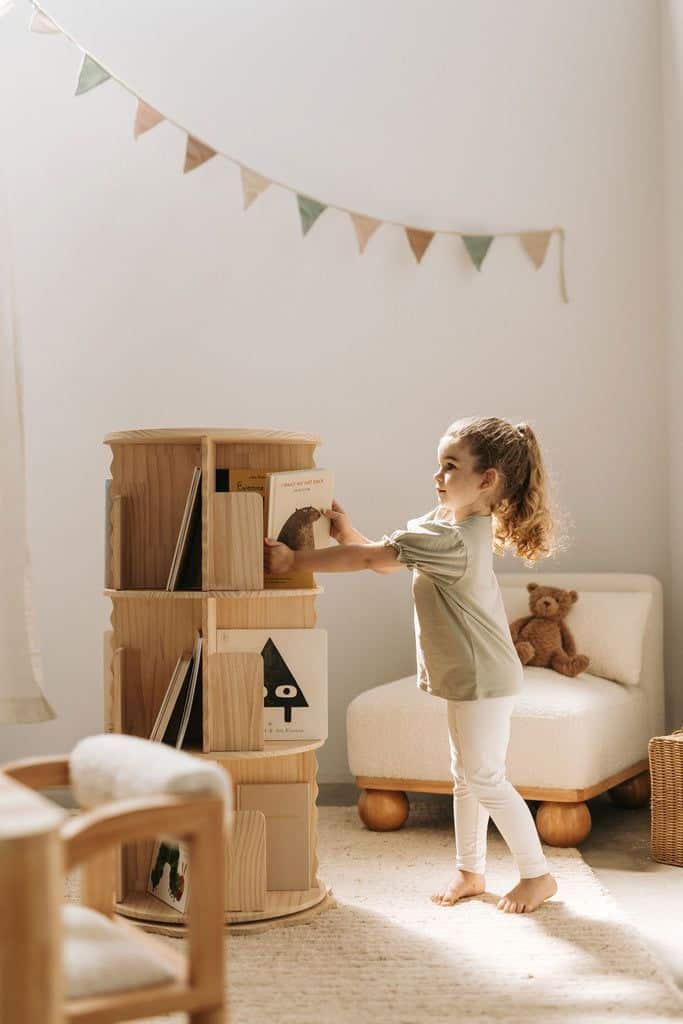
Calm colors often include blues, greens, and soft neutrals. These colors are linked to feelings of peace and relaxation in many studies. For example, blue can slow heart rate and reduce anxiety.
Green is connected to nature and growth, which can encourage balance and harmony. These colors can also create a quiet environment, making children feel more comfortable.
Using calm colors can reduce overstimulation. When a child’s senses are less overwhelmed, it is easier for them to concentrate and regulate their emotions.
Color Perception in Early Childhood
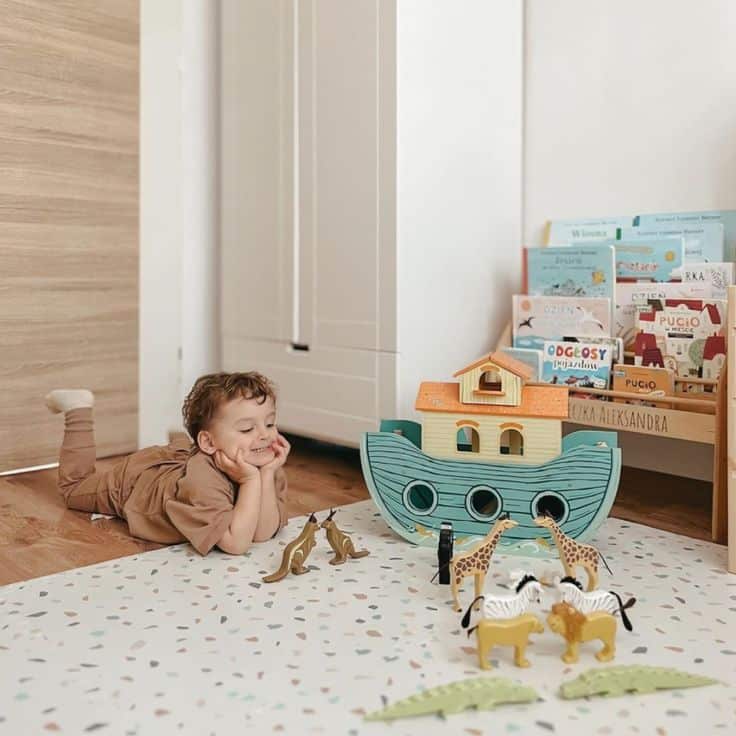
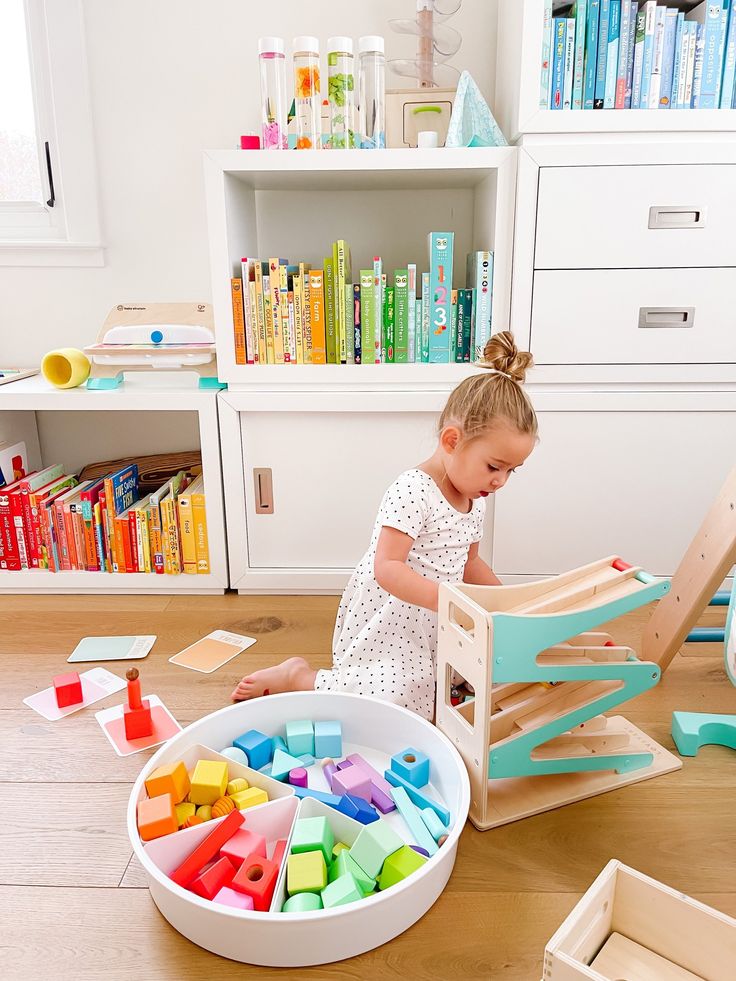
Young children see colors differently as their eyesight develops. Babies can only see a few colors clearly at first. By age two or three, they begin to recognize and prefer certain colors.
Children also start understanding color meanings around preschool age. This means colors in their environment can affect their feelings and reactions.
It is important to use gentle tones because very bright or dark colors may be too intense. Soft colors support healthy visual growth and avoid causing distractions or discomfort.
Best Calm Colors for Kids’ Rooms
Choosing calm colors can help children feel safe, focused, and relaxed. Colors like blue, green, and soft neutrals each offer different benefits that encourage a peaceful environment. These shades also support emotional balance and can enhance sleep quality.
Soothing Blues and Their Benefits

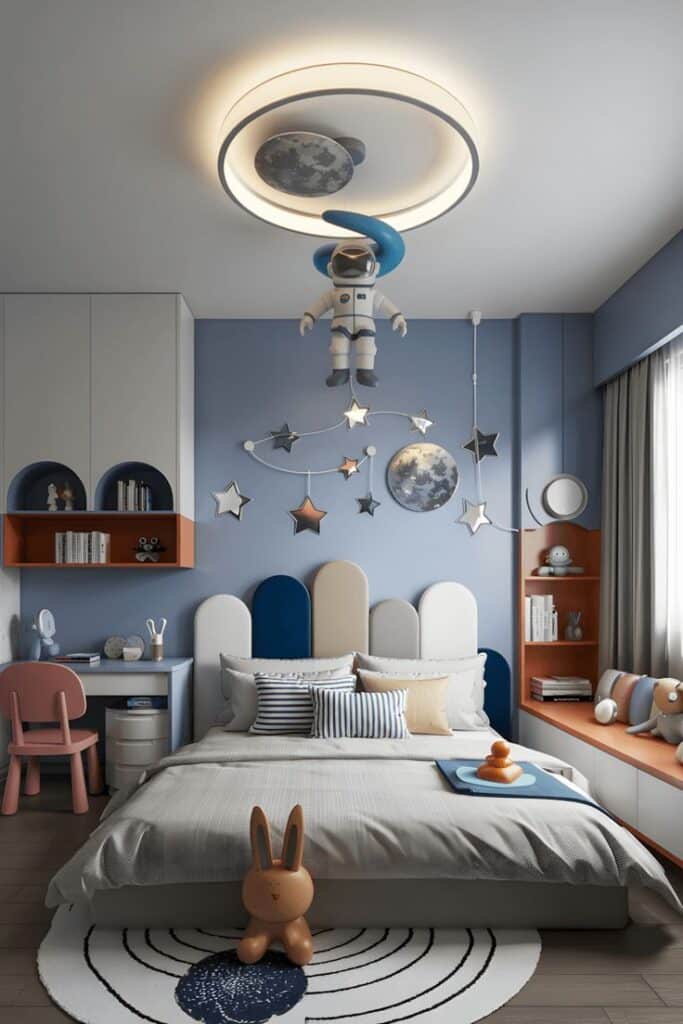
Blues create a cooling and calming effect in kids’ rooms. Lighter shades like sky blue or powder blue help reduce feelings of stress and anxiety. This makes them a good choice for bedrooms where children spend time winding down.
Studies show blue can lower heart rates and slow breathing. This helps kids relax and prepare for sleep. It also encourages concentration during quiet activities like reading or drawing.
Avoid bright or dark blues as they may feel too intense. Soft, muted blues work best to create a gentle, steady mood throughout the day.
Gentle Greens for Relaxation
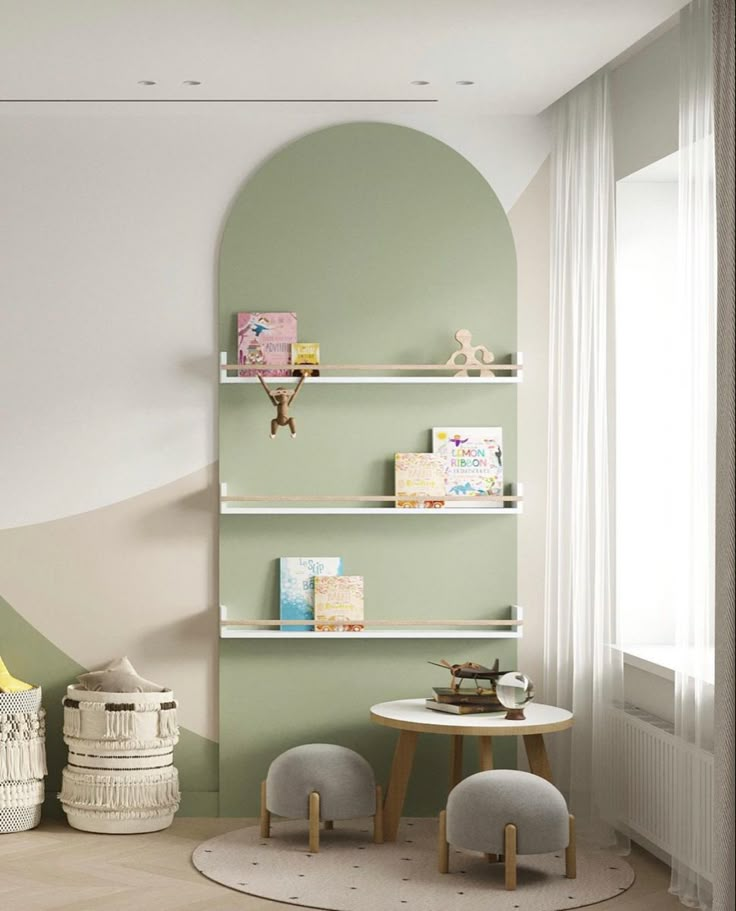
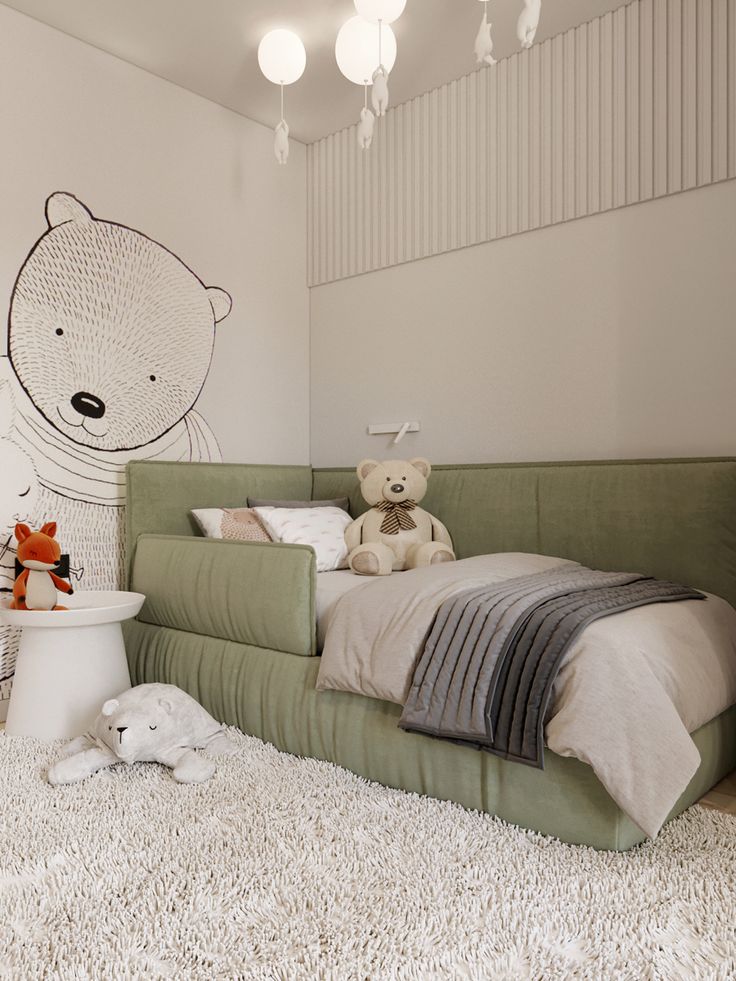
Green reflects nature, bringing a sense of calm and balance to a room. Soft greens like mint, sage, or pale olive promote tranquility and focus. They can also reduce feelings of restlessness.
Greens encourage emotional stability by helping kids feel connected to the natural world. This can improve their ability to handle frustration and stay patient.
Using green in play areas or study spaces can support calm energy while still maintaining liveliness. It works well combined with natural wood or white accents.
Soft Neutrals for Balance
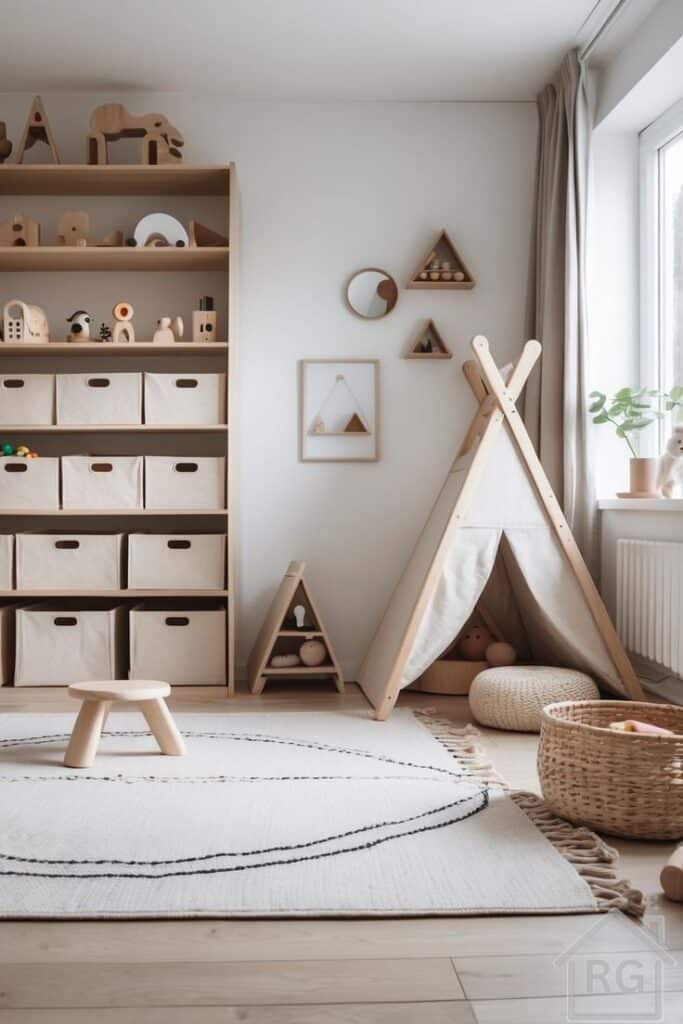
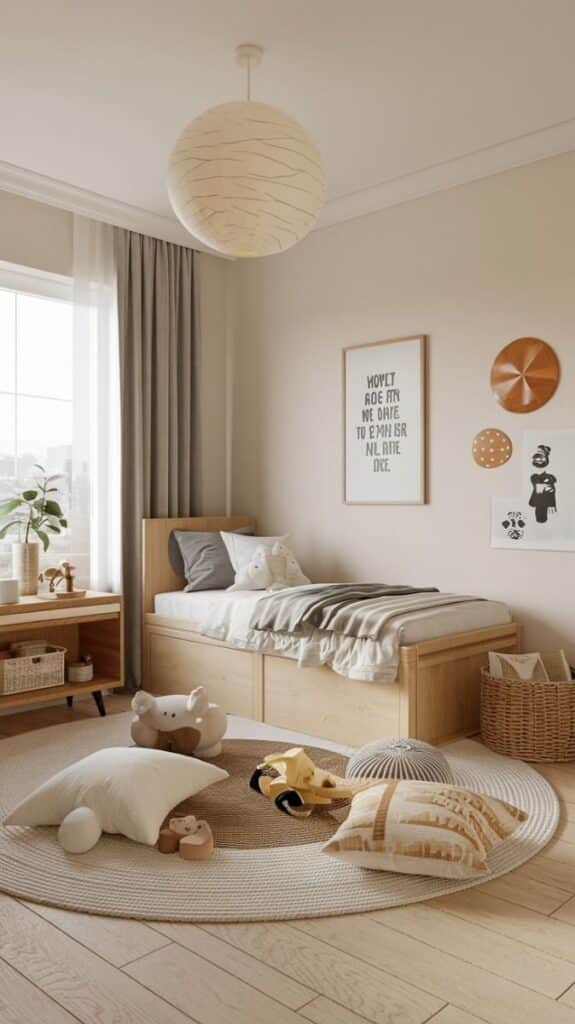
Neutral colors like beige, cream, light gray, and soft taupe provide a stable background. These shades do not overstimulate the senses and can help balance more colorful toys or decorations.
Soft neutrals encourage a calm atmosphere that allows children to focus on activities without distraction. They also make rooms look cozy and welcoming.
Because neutrals pair well with almost any color, they offer flexibility for changing decor as kids grow. Choosing warm neutrals creates a nurturing vibe, while cooler neutrals feel clean and simple.
Design Principles for Calm Kids’ Spaces
Calm kids’ spaces rely on thoughtful color choices that support focus and relaxation. It is important to balance tones so the room feels peaceful without being dull. The room’s purpose should guide the color decisions to encourage the right mood.
Creating a Harmonious Color Palette
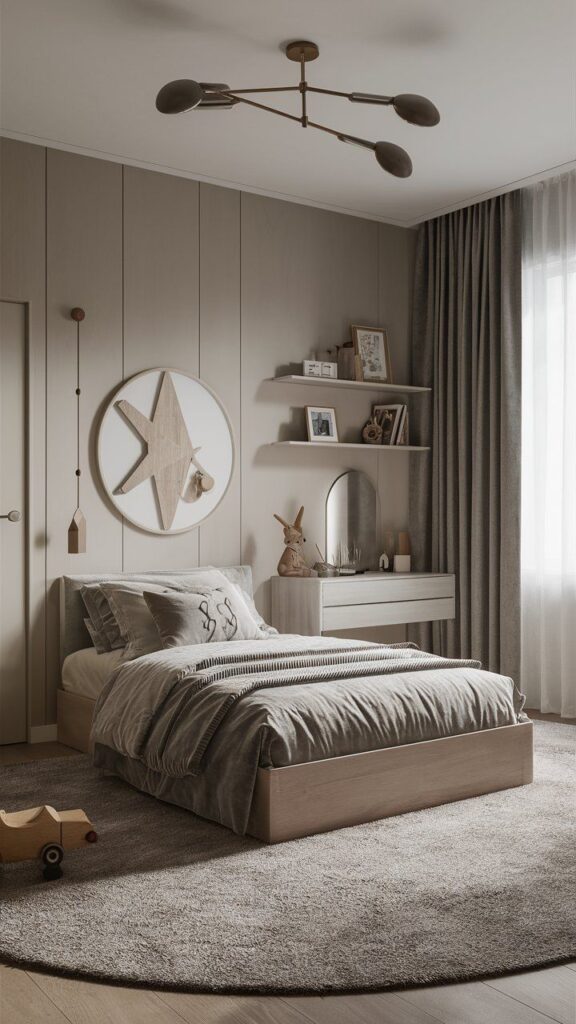
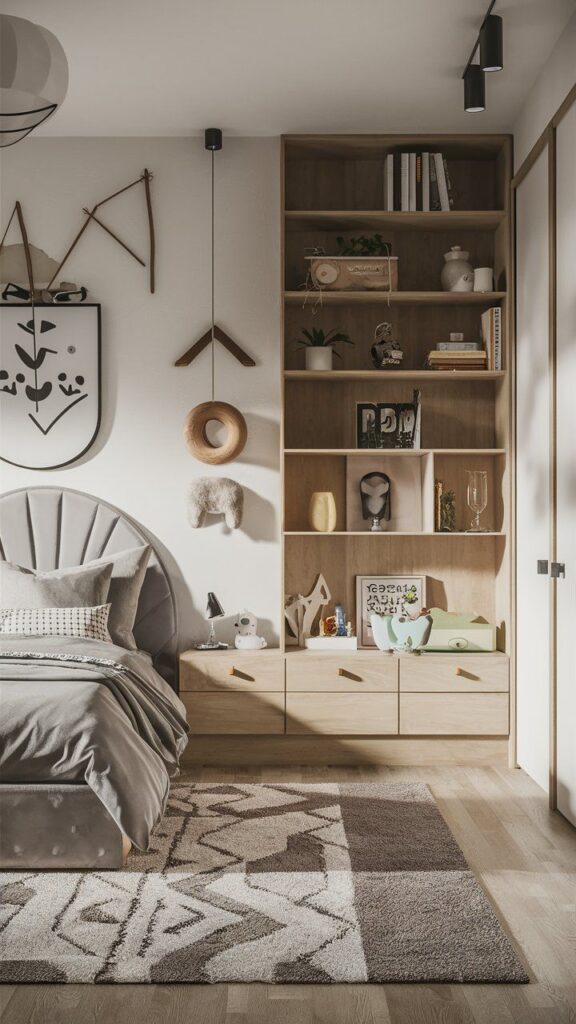
A harmonious palette uses soft, muted colors that work well together. Neutral shades like beige, soft gray, or pale green create a calm base. These tones help reduce visual noise and avoid overstimulation.
Adding one or two gentle accent colors can bring warmth and interest without overwhelming the senses. For example, pastel blue or lavender pairs nicely with neutrals. Avoid bright reds or yellows, as they can increase energy and distract.
Using natural materials alongside these colors, such as wood or cotton, enhances the calming atmosphere. Keeping the palette limited to three or four colors keeps the room balanced and comfortable.
Matching Colors to Room Function
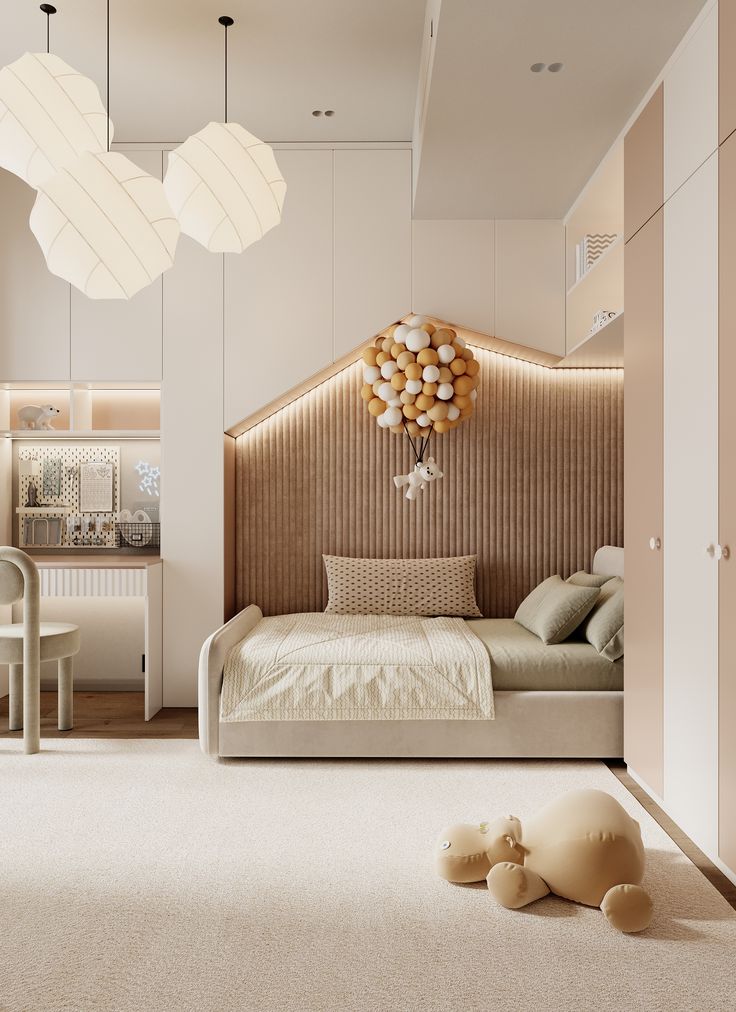

Different rooms need colors that fit their main activities. Sleeping areas benefit from cool or neutral colors like light blue or soft green to support rest. These hues lower heart rate and calm the mind.
Playrooms should use gentle, inviting colors instead of loud or flashy tones. Soft yellows or peach can encourage creativity without making children feel overstimulated. Bright colors can be used sparingly as accents only.
Study spaces require colors that help focus but don’t cause anxiety. Muted blues and greens support concentration and reduce stress. The right colors create an environment that helps children feel calm and ready to learn.
Age-Appropriate Calm Color Schemes
Choosing colors for kids’ rooms requires understanding their developmental needs. Soft, soothing colors can help reduce stress and create a peaceful environment. Different age groups benefit from specific tones that match their growth stages and daily activities.
Calm Colors for Babies and Toddlers
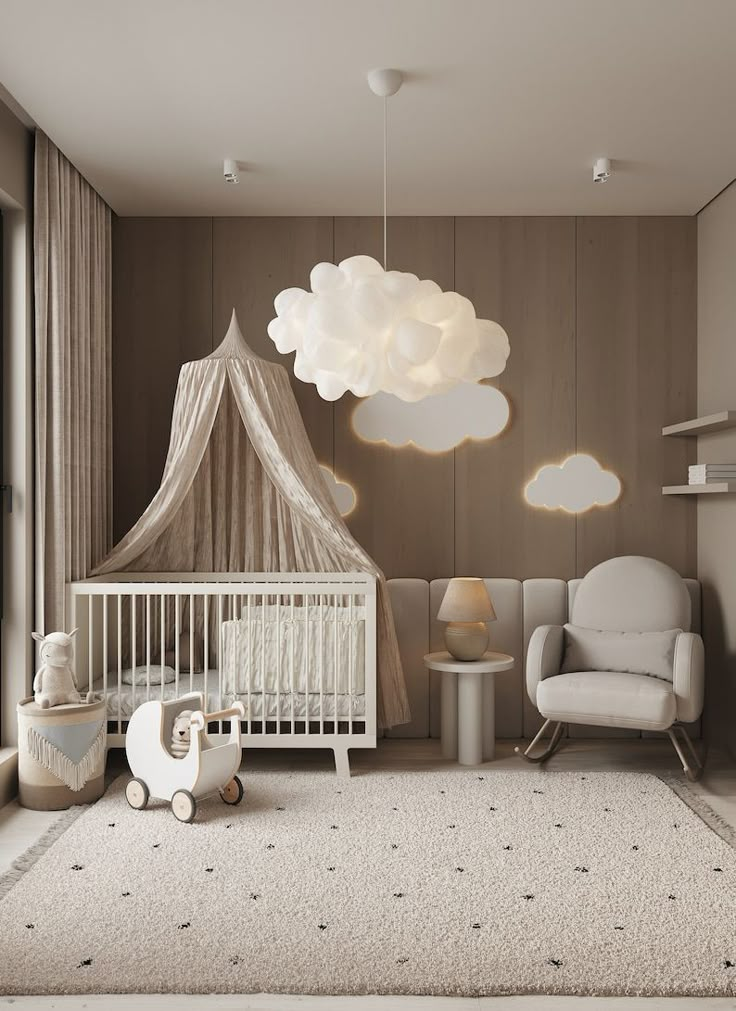
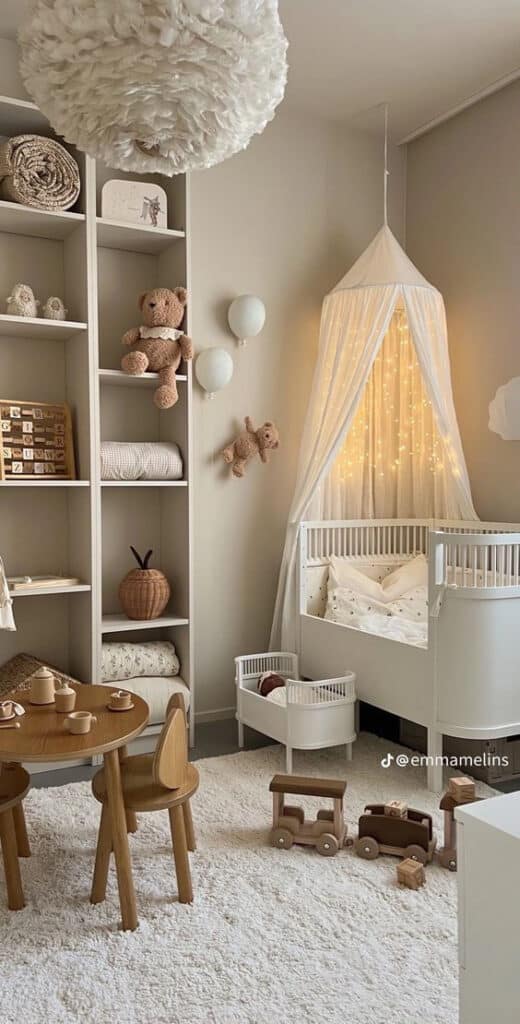
For babies and toddlers, gentle colors like pale blues, soft greens, and warm beige create a calming atmosphere. These colors support better sleep and reduce overstimulation. Bright, bold colors may be too intense for young children and can cause restlessness.
Neutral bases with subtle touches of pastel pink or lavender provide comfort without overwhelming the senses. Walls painted in these colors can make the room feel cozy and safe. Furniture and toys in matching calm shades add harmony and help stimulate early learning gently.
Tranquil Hues for Preschoolers
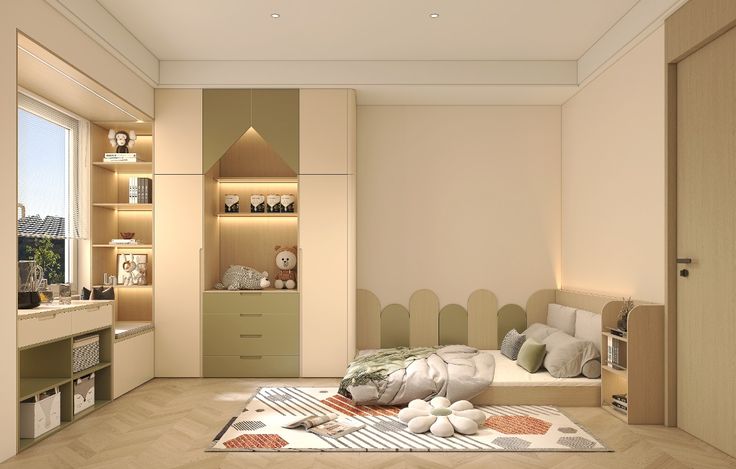
Preschoolers benefit from calm colors that encourage focus and creativity. Light shades of teal, muted yellow, and soft gray work well. These colors keep the atmosphere peaceful but support activity and imagination.
Using color accents like a pale orange or gentle coral on one wall or in décor items can add energy without distraction. Combining different calm shades can create a balanced environment. It helps preschoolers feel secure and ready to explore new skills.
Combining Calm Colors with Decor
Using calm colors in a child’s room works best when paired with thoughtful decor choices. Textures and materials bring comfort, while accent pieces add personality without overwhelming the space.
Incorporating Textures and Materials
Soft textures like cotton, fleece, or wool create a cozy feeling that helps kids relax. Rugs made of natural fibers like jute or cotton give warmth underfoot and reduce echo in the room.
Wooden furniture or shelves add natural tones that balance cool or muted wall colors. Smooth surfaces combined with tactile materials encourage sensory development.
Adding curtains or throw pillows in different fabrics breaks up flat color and invites touch. Choosing fabrics in calm shades keeps the mood soft and quiet, supporting focus and rest.

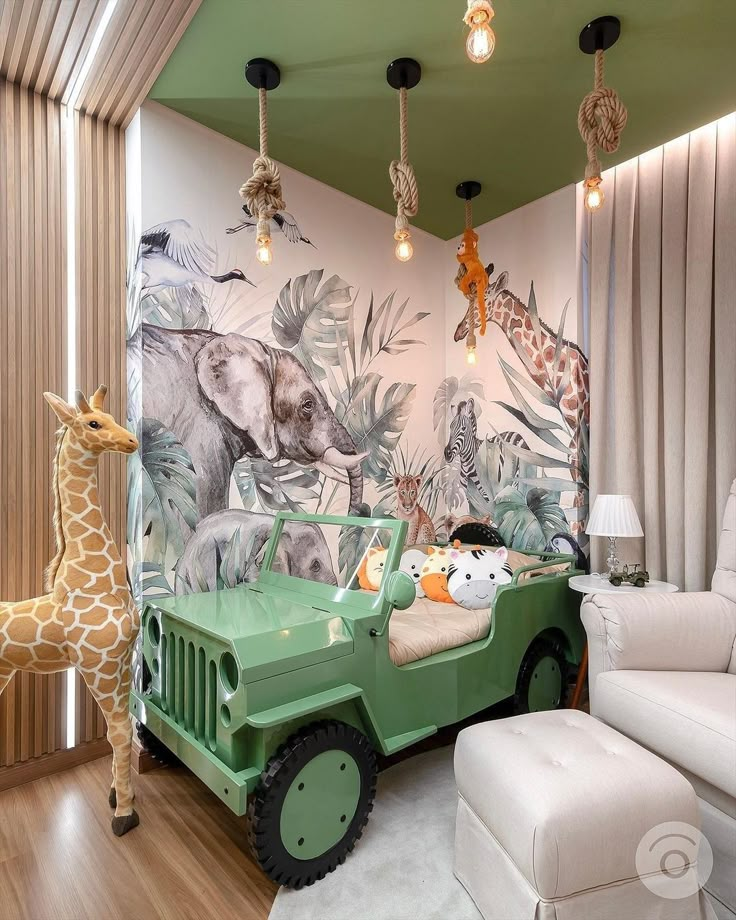
Accent Pieces for Visual Interest
Accent pieces help keep the room engaging without disturbing the calm atmosphere. Items like lampshades, wall art, or small cushions in gentle patterns provide subtle variation.
Using shapes like circles or soft waves in decor can keep the eyes interested but not distracted. Toys and storage boxes in matching calm tones maintain order and visual peace.
A simple gallery wall with framed nature prints or soft abstract designs can personalize the space. Avoid bright or busy patterns to keep the room restful and development-friendly.
Common Mistakes When Choosing Calm Colors
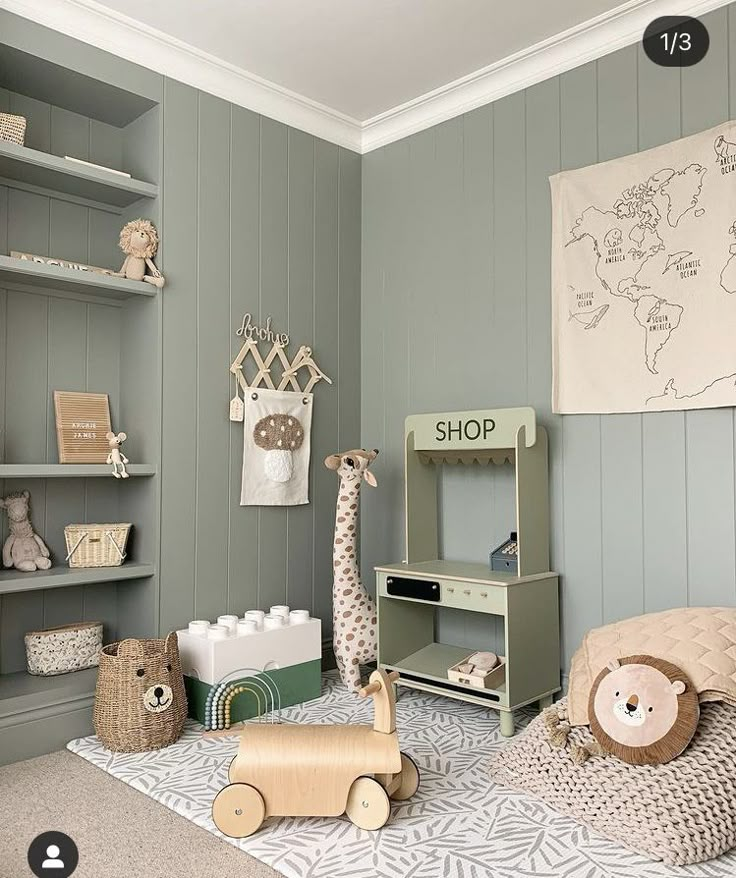
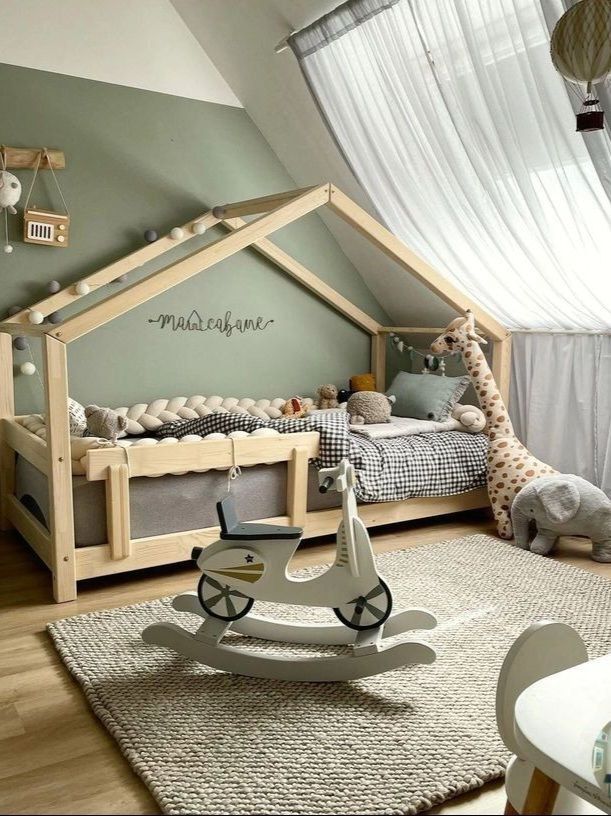
One common mistake is picking colors that are too dark. Dark shades can feel heavy and may make a room seem smaller or less inviting. Calm colors should help create a light, peaceful space.
Another mistake is using colors that are too bright or bold. Bright colors can be stimulating, which is the opposite of what a calm room needs. It can make it harder for kids to relax or focus.
Many people also forget to test paint colors in natural light. Colors can look different in the store than they do in the room. It is important to see how the color changes throughout the day.
Choosing colors with the wrong undertones is another error. For example, a blue with too much gray may look cold, while a yellow with too much orange might be too warm. Knowing the undertones helps pick the right calm shade.
Lastly, some assume neutral equals calm, but too much beige or gray can feel dull. A little color can brighten the room while still keeping it peaceful.
Avoid these mistakes:
| Mistake | Effect on Room |
|---|---|
| Too dark | Makes space feel heavy |
| Too bright | Increases stimulation |
| Ignoring natural light test | Color looks different later |
| Wrong undertones | Changes the mood |
| Too neutral (boring) | Feels dull, not inviting |
Maintaining a Calming Environment Over Time
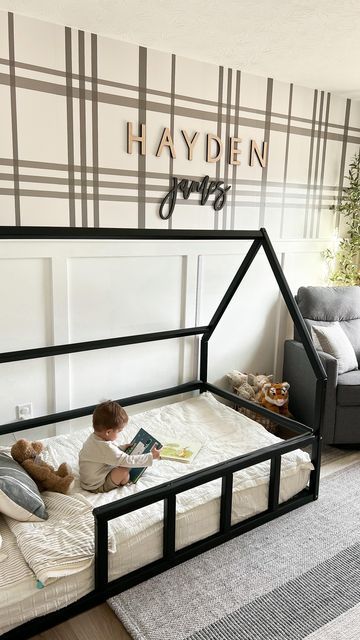
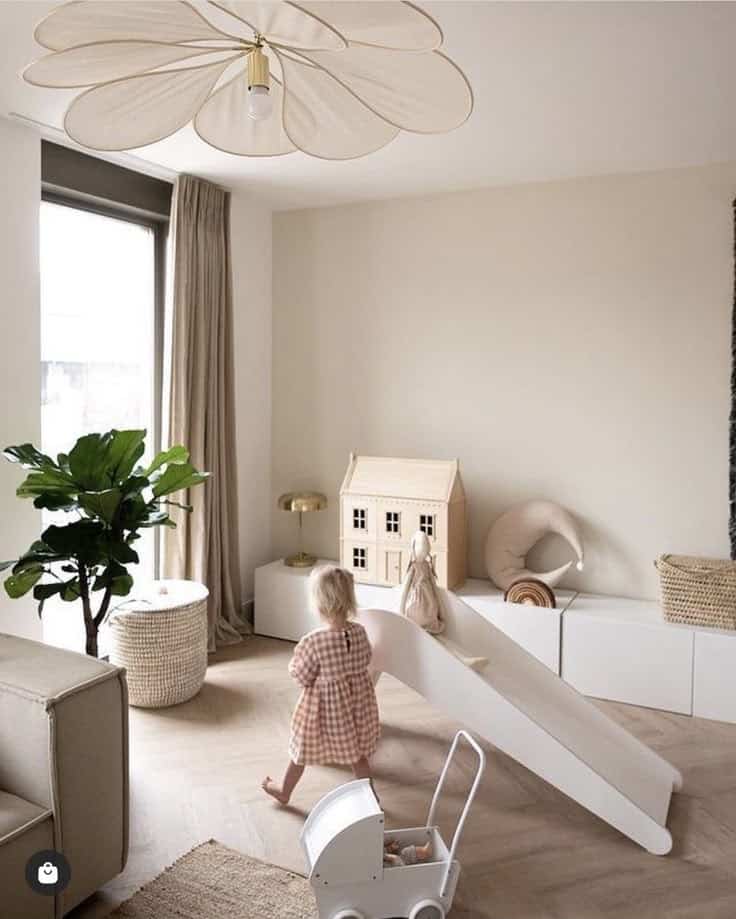
Colors can fade or change with sunlight and wear. To keep a room calm, it helps to choose paints and fabrics that resist fading. This way, the colors stay gentle and soft for longer.
Regular cleaning is important. Dust and dirt can dull colors and make the room feel less fresh. Using mild cleaning products protects both the colors and surfaces.
Changing too many items in the room at once can disrupt calmness. It is better to swap out one piece or color at a time. This keeps the environment steady and peaceful.
Parents should watch how children react to colors over time. If a shade seems to cause restlessness or distraction, they can try switching to a softer tone. This helps keep the room suited to the child’s needs.
Tips for maintaining calm colors:
- Use UV-resistant paint and fabric.
- Clean surfaces with gentle products weekly.
- Avoid sudden, large color changes.
- Adjust colors based on the child’s response.
Maintaining calm colors means balancing durability with how the child feels. This supports a stable and soothing space that helps with focus and rest.
- 461shares
- Facebook0
- Pinterest461
- Twitter0

